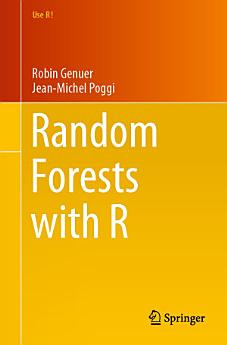Random Forests with R
អំពីសៀវភៅអេឡិចត្រូនិកនេះ
Random forests are part of the family of tree-based methods; accordingly, after an introductory chapter, Chapter 2 presents CART trees. The next three chapters are devoted to random forests. They focus on their presentation (Chapter 3), on the variable importance tool (Chapter 4), and on the variable selection problem (Chapter 5), respectively. After discussing the concepts and methods, we illustrate their implementation on a running example. Then, various complements are provided before examining additional examples. Throughout the book, each result is given together with the code (in R) that can be used to reproduce it. Thus, the book offers readersessential information and concepts, together with examples and the software tools needed to analyse data using random forests.
អំពីអ្នកនិពន្ធ
Robin Genuer is an Assistant Professor of Statistics at the University of Bordeaux and a member of the Inserm U1219 and Inria Bordeaux Sud-Ouest research centres.
Jean-Michel Poggi is a Professor of Statistics at the University of Paris and member of the LMO, the Orsay Mathematics Laboratory (University of Paris Saclay).
They have both produced various research works on random forests and have given numerous lectures and talks on the subject. They have also taught postgraduate and doctoral courses for a variety of audiences. Lastly, they have developed the R package VSURF




